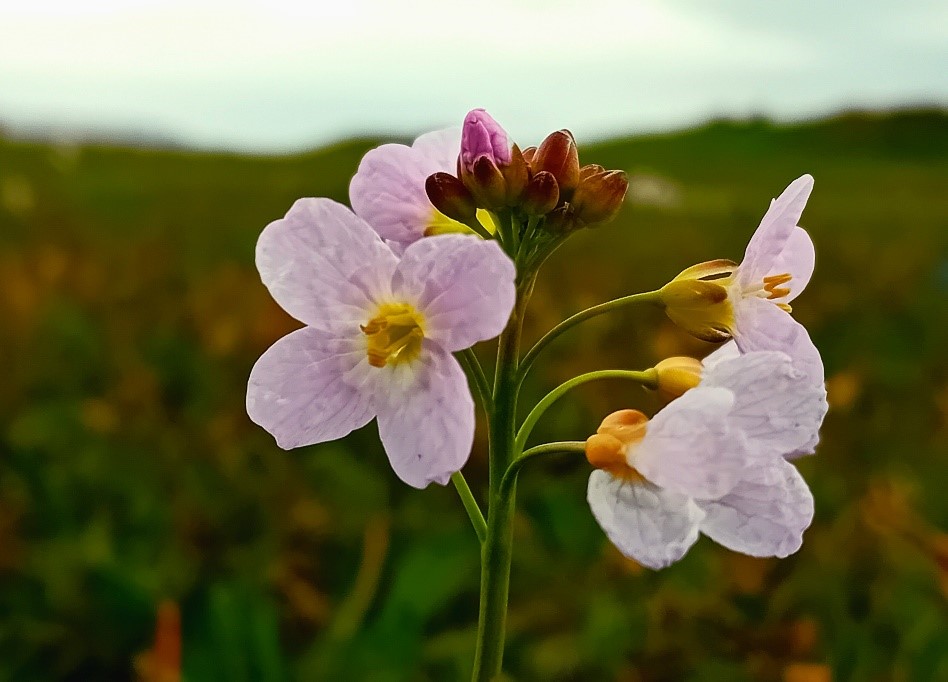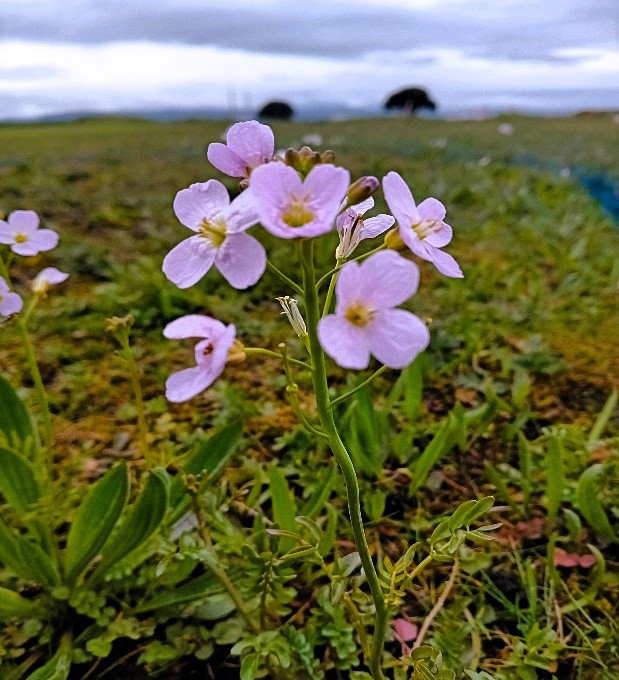Flower of the Month Cuckooflower
Flower of the Month
Cuckooflower
Following the end of a seemingly endless Winter with the doorstep of what will hopefully be a brighter Spring (although it’s officially Summer in a week) some of the flowers on the course are beginning to pop. Over the past couple of weeks, a handful of flowers such as cowslip have emerged but due to the wet weather there has been slower than usual growth on the course. Last week however a flower was spotted to the right side of the 13th fairway on a patch of disturbed soil that was unfamiliar to any of the greenkeeping staff. After some research it was identified as a cuckooflower.

The cuckooflower (Cardamine pratensis) is a native perennial which is also known as Lady’s Smock due to the flowers cup shaped appearance. The name cuckooflower arose due to its blossoming around the same time as the cuckoo bird, between April and May. It is found in damp meadows, pastures and riverbanks and its emergence at this particular spot is probably due to the excessive rainfall that the course has received over the past few months. Incidentally, the flowers colour varies depending on the habitat it is in, having a white colour in damper soils and turning a pinkish purple in dryer soils.
The plant has had a long cultural significance. In folk tradition it was said to be sacred to the fairies and was therefore thought to be a bad omen to bring the plant indoors. It was used for its medicinal properties when made into a tea to help with appetite and digestive ailments as well as even treating scurvy. Today it is popular with foragers as it is rich in minerals and vitamins and can be eaten raw or cooked in salads.

Although the cuckooflower is fairly unremarkable in comparison to many surrounding plant species on the course, it does have an unusual reproductive mechanism known as “leaf vivipary” that appears to be a unique phenomenon in the plant world. Like most flowering plants, the cuckooflowers main mode of reproduction is pollination with it being an important food source for the Orange-tip and Green-veined White butterflies as well as a wide range of insects. The seeds are explosively ejected from the plant reaching as far as 2 metres at times. This method however has a low success rate as many of the clones end up sterile. In order to overcome this hurdle, the plant has evolved to sprout new plants from the basal leaves so that when they come into contact with moist soil in late Summer they can regenerate without the aid of a pollinator, which would explain its proliferation in damp environments. This unique trait in such an unassuming plant makes you think what kind of tricks other plants have that are waiting to be discovered.
Chris Greely
Sustainability Coordinator


